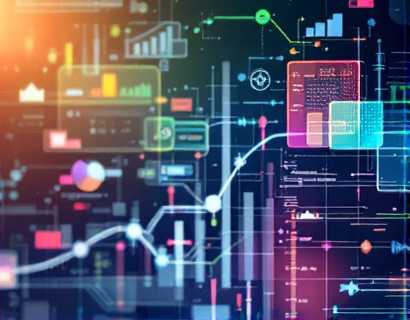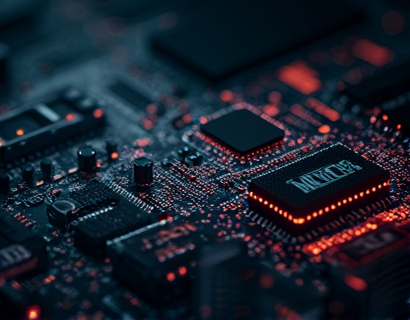AI-Powered Personalized Math Education for Kids and Teenagers: Transforming Learning from Age 5 to 18
Introduction to Personalized Math Education
In the rapidly evolving landscape of education, the integration of artificial intelligence (AI) has opened new avenues for personalized learning experiences. Traditional math education often struggles to cater to the diverse needs of students, leading to disparities in skill development and confidence. An AI-powered personalized math education platform is revolutionizing this approach by providing tailored learning paths, interactive problem-solving, and engaging resources designed specifically for kids and teenagers aged 5 to 18. This innovative solution aims to unlock the full potential of young minds, making mathematics accessible, enjoyable, and empowering.
Understanding the Need for Personalized Learning
The traditional one-size-fits-all approach to education often fails to address the unique learning styles and paces of individual students. AI-driven personalized math education recognizes that each child has distinct strengths, weaknesses, and learning preferences. By leveraging advanced algorithms and data analytics, these platforms can assess a student's current level of understanding, identify knowledge gaps, and adapt the learning content accordingly. This personalized approach ensures that students receive the right level of challenge and support, fostering a more effective and engaging learning experience.
Key Features of AI-Powered Personalized Math Education
1. Interactive Problem-Solving: One of the core features of AI-powered math education is interactive problem-solving. These platforms offer a variety of interactive exercises and puzzles that adapt in real-time based on the student's performance. This dynamic approach keeps students engaged and motivated, as they progress through levels of increasing difficulty. Interactive elements such as drag-and-drop activities, virtual manipulatives, and gamified challenges make learning math a fun and immersive experience.
2. Engaging Resources: To complement interactive problem-solving, these platforms provide a rich library of engaging resources. Videos, animations, and interactive simulations help explain complex concepts in an intuitive and visual manner. Story-based scenarios and real-world applications of math concepts further enhance understanding and relevance, making abstract ideas more tangible and relatable.
3. Personalized Learning Paths: AI algorithms analyze student data to create customized learning paths. These paths are designed to address specific areas of improvement while reinforcing strengths. The system continuously monitors progress, adjusting the difficulty and type of content to ensure optimal learning. This personalized approach ensures that students are always challenged appropriately, preventing frustration or boredom.
Benefits of Personalized Math Education for Young Learners
For children aged 5 to 8, personalized math education offers several key benefits:
- Building Foundational Skills: Early exposure to math through interactive and engaging content helps build a strong foundation. Students develop a solid understanding of basic concepts such as numbers, shapes, and simple arithmetic operations.
- Boosting Confidence: Personalized learning paths ensure that each child progresses at their own pace, reducing the likelihood of feeling overwhelmed. Success in interactive activities and quizzes boosts self-esteem and confidence in their mathematical abilities.
- Developing Problem-Solving Skills: Interactive problem-solving exercises encourage critical thinking and logical reasoning. Children learn to approach problems methodically and creatively, skills that are valuable beyond math.
Advantages for Pre-Teenagers (Ages 9 to 12)
As students enter their pre-teen years, the complexity of math concepts increases. Personalized math education continues to offer tailored support and engagement:
- Enhanced Understanding of Advanced Concepts: AI-driven platforms introduce more complex topics such as fractions, decimals, percentages, and basic algebra. Interactive explanations and step-by-step guidance help students grasp these concepts more effectively.
- Fostering Independence: Pre-teens begin to develop a sense of independence in their learning. Personalized learning paths allow them to work through materials at their own speed, fostering self-directed learning skills.
- Preparation for Future Challenges: By addressing individual knowledge gaps and reinforcing strengths, these platforms prepare students for the more rigorous math curriculum in middle school and beyond.
Supporting Teenagers (Ages 13 to 18)
For teenagers, personalized math education plays a crucial role in preparing them for future academic and career opportunities:
- Deepening Mathematical Understanding: As students approach high school, math concepts become even more abstract and interconnected. Personalized learning ensures that each student has a deep and comprehensive understanding of topics such as geometry, trigonometry, and pre-calculus.
- Building Confidence for Standardized Tests: Many high school students face standardized tests like the SAT or ACT, which include significant math sections. Personalized preparation resources help students identify weak areas and focus their study efforts effectively.
- Preparing for STEM Careers: A strong foundation in math is essential for careers in science, technology, engineering, and mathematics (STEM). Personalized math education equips students with the skills and confidence needed to pursue these fields, fostering a passion for STEM from an early age.
How AI Enhances Personalized Math Education
AI technology is the backbone of personalized math education, enabling a level of customization and adaptability that traditional methods cannot match. Here’s how AI contributes to this transformative educational approach:
1. Data-Driven Insights: AI algorithms analyze vast amounts of data to identify patterns in student performance. This data-driven approach allows for precise identification of strengths and weaknesses, enabling the system to tailor content and exercises accordingly.
2. Real-Time Adaptation: Unlike static educational materials, AI-powered platforms can adjust in real-time based on student interactions. If a student struggles with a particular concept, the system can immediately provide additional resources or alternative explanations to reinforce understanding.
3. Predictive Analytics: AI can predict future performance based on current trends. This predictive capability allows educators and students to proactively address potential issues, ensuring that students stay on track and continue to make progress.
4. Natural Language Processing (NLP): NLP technology enables the platform to understand and respond to student queries in natural language. This feature provides instant feedback and support, making the learning process more intuitive and user-friendly.
Creating a Positive Learning Environment
Beyond academic benefits, AI-powered personalized math education fosters a positive learning environment that encourages curiosity and a love for learning:
1. Reduced Anxiety: By providing a supportive and non-judgmental learning space, these platforms help reduce math anxiety. Students feel more comfortable taking risks and making mistakes, which are essential parts of the learning process.
2. Increased Engagement: Interactive and gamified elements keep students engaged and motivated. The sense of achievement from completing challenges and advancing through levels reinforces positive learning behaviors.
3. Collaborative Learning: Many AI-powered platforms include features that promote collaboration among students. Peer-to-peer learning and discussion forums allow students to share insights, solve problems together, and learn from one another.
Implementing AI-Powered Personalized Math Education
Integrating AI-powered personalized math education into existing curricula can be a seamless and beneficial process:
1. Complementary Tool: Schools can adopt these platforms as complementary tools to enhance traditional math instruction. Teachers can use the data and insights provided by the AI to inform their teaching strategies and provide targeted support.
2. Professional Development: Educators should receive training on how to effectively integrate AI-powered tools into their classrooms. Understanding the capabilities and limitations of these platforms ensures they are used to their full potential.
3. Parental Involvement: Keeping parents informed about the benefits and functionalities of AI-powered math education can foster a supportive home environment. Parents can assist in reinforcing learning outside the classroom, creating a consistent and supportive educational experience.
Conclusion
AI-powered personalized math education represents a significant leap forward in how we approach math learning for kids and teenagers. By combining interactive problem-solving, engaging resources, and personalized learning paths, these platforms empower young minds to reach their full potential. As we continue to refine and expand these technologies, the future of math education looks brighter, more inclusive, and infinitely more engaging for all learners.










































